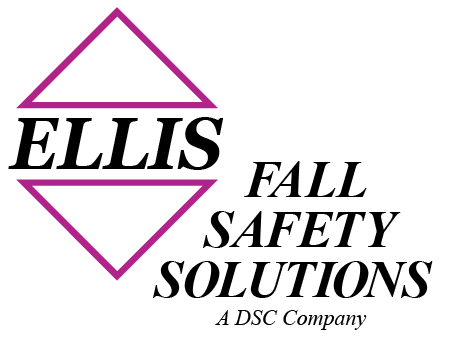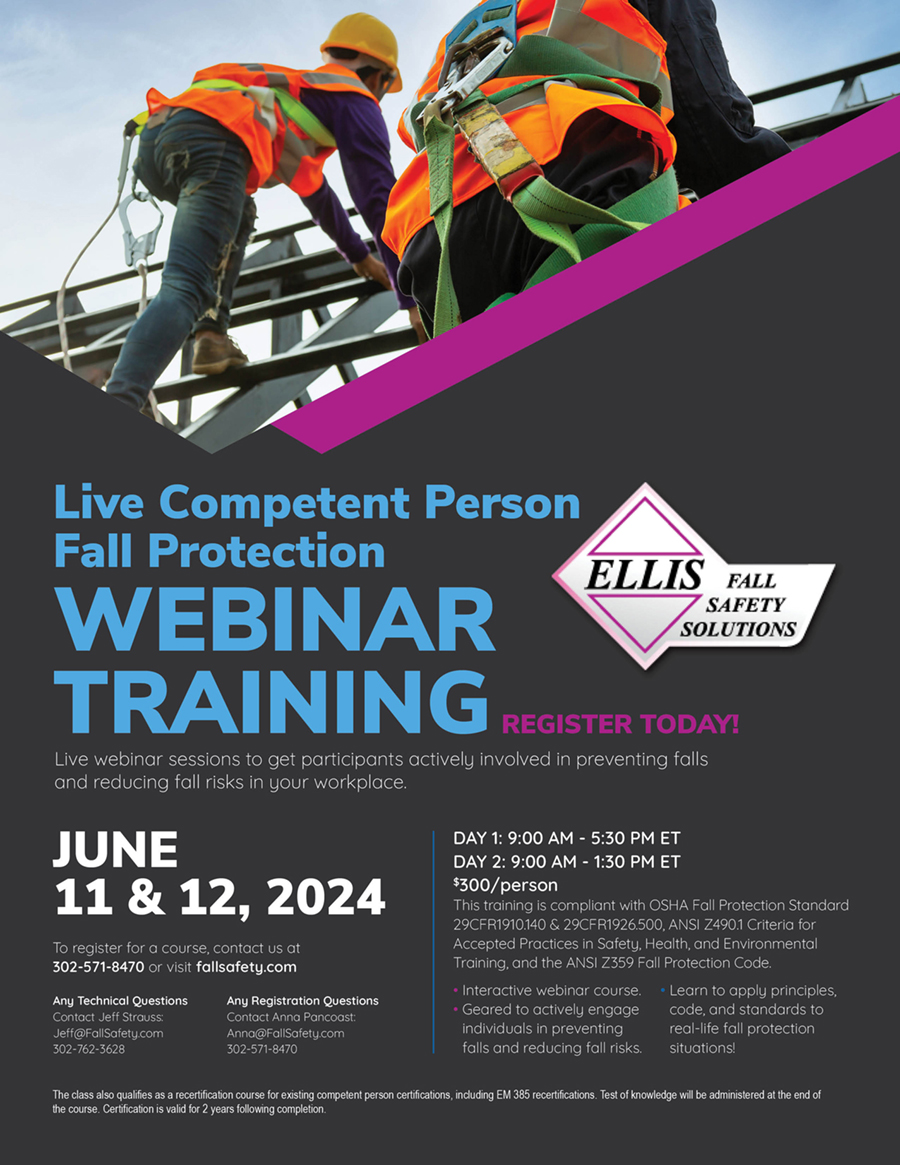Falls are among the top three most common causes of work-related injuries, making fall protection training critical. According to the U.S. Bureau of Labor Statistics, in 2019, the manufacturing and construction industries saw almost 600,000 injuries, with fatal injuries steadily on the rise year over year. With proper training, equipment knowledge, and appropriate techniques in place, almost all falls are preventable. To help reduce the risk, Ellis Fall Safety is sharing the benefits of fall protection training and how you can utilize it to protect your employees when exposed to fall hazards.
Who Needs Fall Protection Training
There is a significant difference between having fall protection systems in place and effectively using, having, and maintaining the correct systems. Fall protection training can mean the difference between life and death and it is necessary to protect employees’ wellbeing. Any worker who works in high hazard situations or with personal fall protection equipment is required to undergo fall protection training. This includes workers, supervisors, and managers who work near or supervise workers at heights. A qualified person must conduct the fall protection training. Under this long-established OSHA rule, specific requirements must be met at the workplace, too. This includes the components, devices, and equipment that are being used are adequately rated, and that employees are trained to use them.
If you’re a property or business owner seeking a company to perform a work-from-height-related task at your facility, it’s important to verify that they are certified in fall protection. This guarantees that the individuals being hired are responsible.
Types of Fall Protection Training
There are generally four levels of fall protection training—awareness, authorized worker, competent person, and qualified-person training. These levels of training all help workers recognize specific fall hazards and the steps they can take to reduce the risk.
- Fall Protection Awareness – awareness level training is the most basic and generally consists of on-site sessions, computer presentations, equipment demonstrations, and some hands-on application. Individuals will have a basic understanding of the hierarchy of fall protection, how to stay safe at work, complete body harness training, and the basic ABC’s—anchorage, body support, and connecting means.
- Authorized Worker – any worker who is exposed to fall hazards at the workplace should undergo this training. This training level focuses on best practices to keep employees safe and OSHA compliant standards and regulations.
- Competent Person – a competent person has competency requirements in 19 of OSHA’s standards. Oftentimes designed for someone in a supervisor position, this training covers all types of fall hazards and methods of protection. A competent person, once trained, can address, evaluate, and recommend solutions in a fall hazard situation.
- Qualified Person – a qualified person typically has a degree in engineering or a similar field. Just like a competent person, a qualified person can identify fall hazards, however, their experience allows them to perform tasks, like making certified anchorage points or designing horizontal safety systems. They’re also required to have competency in 32 different OSHA regulations.
At Ellis Fall Safety, we are here to help ensure that you and your team can work safely and effectively. If you’re looking to establish a safe workplace for your employees, free from the risk of falls, consider contacting our team today to see all the benefits fall protection training can bring to your facility.

